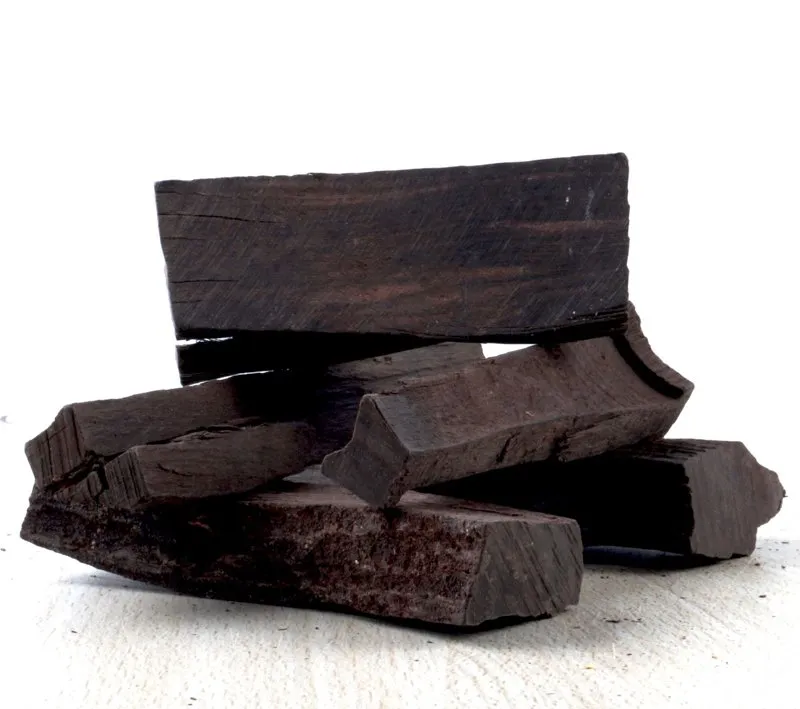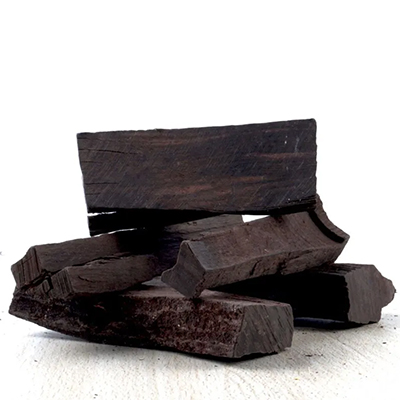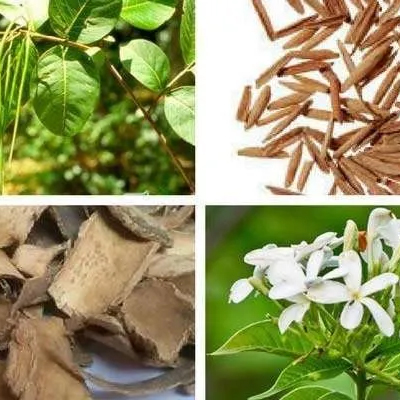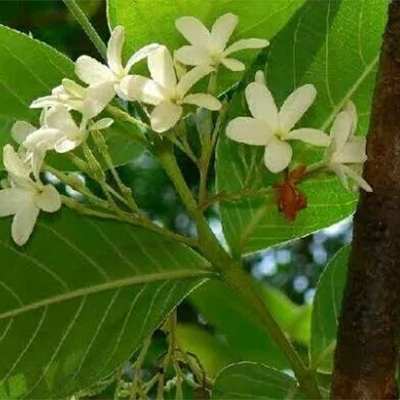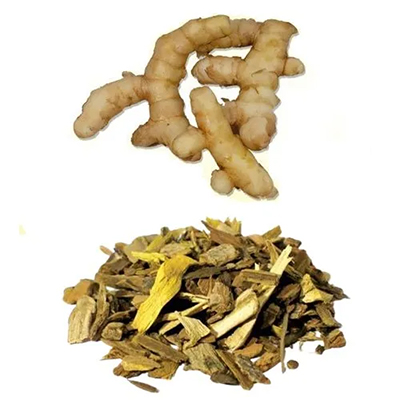On This Page
Agaru (Aquilaria Agallocha) – The Black Gold
Introduction
Agaru, famous for the name “wood of Gods’ ‘, is a critically endangered species. It is the oldest species that is extensively cultivated in the North-Eastern states of India and Assam. It is not only used as a traditional medicine but also as a commercial product. This evergreen tree is full of various properties like analgesic, antipyretic, cytotoxic, appetizer, antihistamine, etc. In Ayurveda, this drug is considered Rakshoghana (protective) and recent research revealed that Agaru is full of antimicrobial activity that proves in Rakshoghna effect. As per Ayurveda, this drug is Swasahara (used in respiratory disorders), Shirovirechnopaga which is used in various cephalic and supraclavicular disorders. Agaru is a highly-priced and valuable tree, and its price often exceeded the price of Gold. Due to this reason, Agaru is also known as the Black Gold.
Basonym of Agaru
न गुरु यस्माद् तद् अगरु, गुरुत्वे अपि धूम रूपेणात्प्तीति प्रकृत्या न गुरु अगुरु (लघु) कर्मणा अपि लघु। अगरुः इति पाठे ‘अगे पर्वते रोहति’ इति।
The term Agaru has two meaning –
- The ‘Agaru’ Kastha i.e heartwood I heavy by weight but is light by nature.
- The tree grows in hilly regions.
Synonyms of Agaru
- According to habitat:
अनार्यकम् – अनार्ये किरात देशे जायमानः।
The plant grows commonly in the hilly region of the Northeastern part of India.
कृमिजं – क्रिमिभिजतिम्।
Agaru plant originated from fungus infestation.
कृमि जग्धम – कृमिभिर्भक्षितं सञ्जायते।
The aromatic part of Agaru is formed by Fungus infestation.
जोङ्गकः – जोङ्गके गिरो भवः।
The tree is found in hilly regions.
योगजं – योगात् कृमि संयोगज्जात्म।
The aromatic heartwood is formed by an infestation.
- According to action and properties:
धूपवासम – धूपो वासनार्थमस्य धूपो वासः सुगन्धो अस्येतिवा।
Heartwood is aromatic, hence used in perfumery.
प्रवरं – प्रकर्षेण व्रियते आईटीआई, श्रेष्ठम इत्यर्थ:।
Agaru is a potent drug.
Some other synonyms of Agaru are as follows:
- Loha – The heartwood of Agaru is heavy and black as iron.
- Rajarha – Agaru is used by royal families due to its extreme utility and value.
- Sheet Shamana- Agaru is a drug with cold potency.
- Shringaj – Agaru grows in hilly regions.
- Vrana Prasadaka – The heartwood of Agaru is used to enhance the complexion of the skin.
- Vishv Dhoop – The fragrant heartwood of Agaru is used to make perfumes and incense.
Regional Names of Agaru
- Agar (Hindi)
- Agar Chandan, Agarkastha (Bengali)
- Krishnagaru (Kannada)
- Ooda, Pharsi (Punjabi)
- Agalichandnam (Tamil)
- Eaglewood, Agarwood, Aloeswood (English)
- Agaru (Sanskrit)
- Akil (Malayalam)
- Agar (Marathi)
- Oud, Oodh, Shajarat- al- oudh (Arabic)
- Mai kritsana (Thailand)
Botanical Name
Aquilaria agallocha Linn. or Aquilaria malaccensis Lamk.
Aquilaria means pertaining to eagle
Agallocha means to make exceedingly glorious
Family
Thymelaeceae (Agaru Kula)
Ayurveda Reference for Agaru (Aquilaria agallocha)
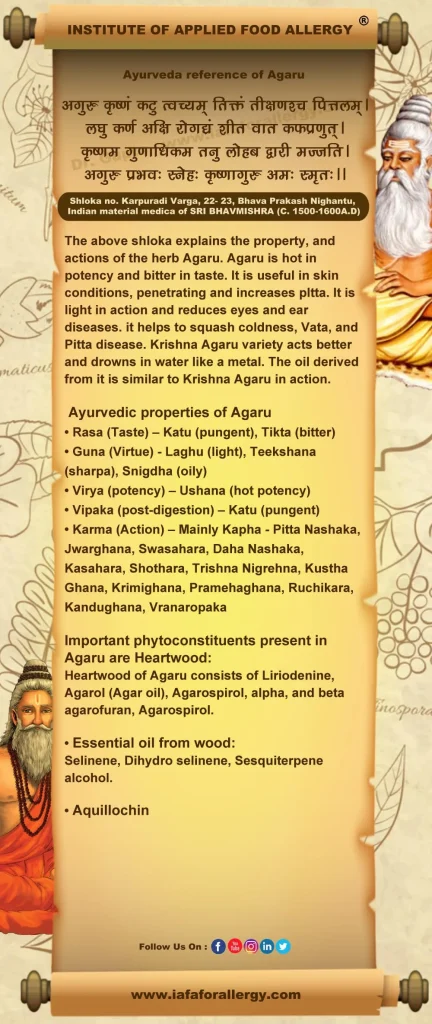
Scientific Classification of Agaru
| Kingdom | Plantae |
| Class | Dicotyledons |
| Subclass | Monochlamydae |
| Series | Curvembryae |
| Order | Thymeleales |
| Family | Thymelaeaceae |
| Genus | Aquilaria |
| Species | agallocha |
Classification of Agaru – As Per Charaka and Sushruta
- Charaka: Sheet Prashmana Mahakshaya, Swasahara mahakshaya, Shiro-Virechana, Tikata Skandha
- Sushruta: Eladi Gana, Salsaaradi Gana
Agaru’s Description in Brihtrayi
| Charaka | Shusruta |
Vagbhata (Ashtang Hridya) |
| C. S. Su. 3/ 27 | S. S. Su. 5/ 18 | A. H. Su. 3/ 11, 20 |
| C. S. Su. 4/ 37, 42 | S. S. Su. 36/ 27 | A. H. Su. 10/ 28 |
| C. S. Su. 5/ 18, 23, 60 | S. S. Su. 38/ 12, 25 | A. H. Su. 15/ 43 |
| C. S. Su. 6/ 15, 16, 24 | S. S. Su. 39/ 9 | A. H. Su. 20/ 38 |
| C. S. Su. 25/ 39 | S. S. Su. 45/ 123 | A. H Su. 21/ 13 |
| C. S. Su. 26/ 71 | S. S. Chi. 2/ 68, 75 | A. H. Su. 22/ 21 |
| C. S. Vi. 8/ 150, 158 | S. S. Chi. 4/ 24 | A. H. Su. 29/ 25 |
| C. S. Chi. 1. 1/ 46, 56, 61 | S. S. Chi. 9/ 6 | A. H. Sa. 2/ 48 |
| C. S. Chi. 1. 2/ 12 | S. S. Chi. 11/ 8 | A. H. Ci. 1/ 137, 143, 163 |
| C. S. Chi. 1. 3/ 2 | S. S. Chi. 15/ 30 | A. H. Ci. 4/ 12 |
| C. S. Chi. 3/ 252, 266, 268 | S. S. Chi. 17/ 15 | A. H. Ci. 7/ 18 |
| C. S. Chi. 6/ 27, 38, 49 | S. S. Chi. 18/ 5 | A. H. Ci. 10/ 49 |
| C. S. Chi. 12/ 63, 68 | S. S. Chi. 19/ 28 | A. H. Ci. 12/ 18 |
| C. S. Chi. 15/ 148, 163 | S. S. Chi. 20/ 35, 54 | A. H. Ci. 17/ 22, 36 |
| C. S. Chi. 17/ 122 | S. S. Chi. 22/ 17 | A. H. Ci. 21/ 75 |
| C. S. Chi. 21/ 78 | S. S. Chi. 31/ 5 | A. H. U. 1/ 23 |
| C. S. Chi. 23/ 76, 230 | S. S. Chi. 37/ 12, 36 | A. H. U. 22/ 36 |
| C. S. Chi. 24/ 132, 185 | S. S. Chi. 38/ 52 | A. H. U. 26/ 26, 55 |
| C. S. Chi. 25/ 90 | S. S. Ka. 6/ 14 | A. H. U. 27/ 38 |
| C. S. Chi. 26/ 181, 187, 208 | S. S. U. 21/ 11 | A. H. U. 37/ 83 |
| C. S. Chi. 27/ 40 | S. S. U. 39/ 274 | A. H. U. 39/ 17, 104, 155 |
| C. S. Chi. 28/ 149, 166 | ||
| C. S. Chi. 29/ 91, 106 | ||
| C. S. K. 1/ 26 | ||
| C. S. Si. 12/ 56 |
External Morphology of Agaru
Agaru is an evergreen large tree with pilose young shoots.
- Leaves: Linear lanceolate to lanceolate and obovate, oblong, 2 mm long petiole, acute or rounded at the base, 5-9 cm long, faintly parallel nerved.
- Flowers: Small, greenish, slender pilose pedicels, 4-6 mm long, forming sessile or shortly peduncled umbels arising laterally from the younger branchlets, perianth 5 mm long, Perianth scales oblong, villose, alternating with the stamens, filaments red at apex, the ovary is tomentose.
- Fruit: The fruit of Agaru is Capsulated, obovate-cuneate in shape, slightly compressed, 2.5 cm long, densely tawny or yellowish tomentose (hairy).
- Seeds: Brownish black color. Seeds are ovoid-shaped with long tails.
- Formation: The fungus-infested trees furnish the agarwood or eaglewood of commerce which occurs as dark-colored resinous fragrant masses in the center of the bole. The wood of Agaru is infected by certain fungi due to which it develops large and irregular patches of dark streaks that are charged with an oleoresin and becomes odoriferous. The intensity of the dark patch or agar is a measure of the quantity of oleoresin present.Agar is frequently found in trees that are 20 years old, but commercially exploitable amounts of agar are found in 50 years old trees. Trees 80 years old are known to be the richest in their content of agarwood.Categories: Reference from Wealth of India Vol-1. Depending on the extent of resin accumulation, the heartwood is graded into 4 categories.
Flowering Time
The flowering time of Agaru is between May to June.
Fruiting Time
The fruiting time of Agaru is between July to August.
Types of Agaru
Raja Nighantu mentioned 5 varieties of Agaru:
- Swadu Agaru (Agaru Sara)
- Krishna Agaru
- Kastha Agaru
- Daha Agaru
- Mangalya Agaru
Distribution of Agaru
Agaru tree is globally found in Bhutan, Malaysia, Philippines, Myanmar, and Malaya Island,
In India two species of Aquilaria are found:
- Aquilaria khasiana
- Aquilaria malaccensis/ A. agallocha
- Aquilaria macrophylla is also thought to produce agarwood that is found near Nicobar Island.
Aquilaria agallocha occurs mostly in the foothills of the north-eastern region at 500- 1000m i.e in Assam, Mizoram, Arunachal Pradesh, Meghalaya, Nagaland, West Bengal, and Tripura. In Meghalaya and Assam, it occurs sporadically in the districts of Darrang, Sibsagar, Garo hills, Cachar, Sadiya, and Nowgong.
The Useful Part of Agaru
Heartwood & oil
Important Phytoconstituent of Agaru
- Heart wood – Heartwood of Agaru consist of Liriodenine, Agarol (Agar oil), Agarospirol, alpha and beta agarofuran, Agarospirol.
- Essential oil of Agaru wood – Selinene, Dihydro selinene, Sesquiterpene alcohol.
- Aquillochin
- Dihydro Agarofuran
- Noroxo Agarofuran
Recent Research on Agaru
- Mild laxative activity
- Diuretic activity
- Aphrodisiac activity
- Analgesic activity
- Antihistaminic
- Memory enhancer activity
- Cytotoxic activity
- Insecticidal
- Antioxidant
- Anti-inflammatory
- Antihyperglycemic
- Antipyretic
- Ulcer protecting
- Anxiolytic
- Thrombolytic
Rasa-Panchaka (Properties) of Agaru
| Rasa (Taste) | Katu (pungent), Tikta (bitter) |
| Guna (Virtue) | Laghu (light), Tikshana (sharp), Snigdha (oily) |
| Virya (potency) | Ushana (hot potency) |
| Vipaka (post-digestion) | Katu (pungent) |
| Dosha Karma (action on Dosha) | Mainly Vata- Kapha Nashaka, Tvachya, Rasyana, Hikka Hara, Kasahara, Swasahara, Kusthaghana, Sitapanayana, Akshirogahara |
Rasa-Panchaka (Properties) of Different Varieties of Agaru
| Rasa Panchaka | Swadu Agaru | Krishna Agaru | Kastha Agaru | Daha Agaru | Mangalya Agaru |
| Rasa | Katu, Kashaya | Katu, Tikta | Katu | Katu | – |
| Virya | Ushna | Ushna | Ushna | Ushna | Sheeta |
| Dosha Karma | Vata Hara | Tridoshaghana | Kapha Hara | Vata Hara | – |
| Yoga | Dhupanarth | Lepanarth | Lepanarth | Kesha Vardhana | Gandh Vardanarth |
Prayogarha Vyadhi (Therapeutic Indication) of Agaru
- Karna Roga
- Akshirogahara
- Kasa
- Hikka
- Swasa
- Lavanmeha
- Sotha
- Twaka Vikara
- Kustha
Aamyik Prayog (Therapeutic Uses) of Agaru
- Hikka, Swasha (Hiccough and Asthma):
- The powder of Agaru mixed with honey is taken to check the hiccough.(Charaka Samhita Chikitsa Sthana. 17/ 129)
- Incense of Agaru is prescribed for hiccoughs and bronchial asthma. (Ashtanga Hridya Chikitsa Sthana. 4/ 12)
- It is also a component of Satyadi curna. (Charaka Samhita Chikitsa Sthana. 17/ 123, 124)
- Kasa (Cough): Aguru powder mixed with honey relieves cough. (Ashtanga Hridya. Chiktsa Sthana. 3/ 47)
- Prameha (Diabetes): In Lavanameha, the decoction of Patha and Agaru is recommended. (Sushruta Samhita Chikitsa Sthana. 11/ 8)
- Shotha (Oedema): The paste of Canda and Aguru is useful in edema. (Charaka Samhita. 12/ 70)
- Tvaka Vikara (Skin disease):
- The Agaru oil is efficacious in skin diseases such as ringworm etc.(Susruta Samhita Chikitsa Sthana. 31/ 5)
- The oils of Sarala, Devdaru, and Sinshapa have a similar effect. (Susruta Samhita Chikitsa Sthana. 31/ 5)
- Dushta Vrana (Chronic ulcers): The oil of these plants is useful in chronic ulcers, worms, Kustha, and disorders of Kapha and Vata. (Shusruta Samhita Sutra Sthana. 45/ 123)
- Rasayana (Rejuvenator): Aguru is also recommended as Rasayana. (Ashtanga Hridya. Chi. 39/ 104, 156)
Important Benefits of Agaru
- Allergies: Agaru bark is bitter and exhibits Ropan properties i.e wound healing properties, anti-inflammatory properties, etc. Therefore, Agaru is an excellent choice for treating various skin conditions like allergies, eczema, rashes, etc.
- Loss of appetite (Aruchi): Aruchi is a result of Agnimandya i.e low digestive fire. The Ushana property (hot potency) of Agaru stimulates digestive fire and helps to cure anorexia.
- Bronchitis (Swasavaha Roga): Excessive mucus in the lungs is a result of Ama (toxin) in the body. Agaru helps in the digestion of Ama in the body. Agaru with its Kapha balancing property and Ushana Guna help to digest Ama (toxin) and remove excess mucus from the lungs that result in bronchitis.
- Cough (Kasa): Agaru with its Kapha balancing properties helps to clear air passage by removing mucus and controlling cough.
- Liver disorders (Yakrit Vikara): Agaru exhibits antioxidant properties that help to reduce inflammation in the liver and maintains a healthy liver.
Matra (Therapeutic Administration and Dosage) of Agaru
- Churna (powder): 1- 3 grams
- Taila (Oil): 1- 5 drops

Have A Health Issue?
Consult Online
- Dr. Sahil Gupta (B.A.M.S., M.H.A.)
Ayurvedic Allergy Specialist
CEO & Founder of IAFA®
Classical Reference of Agaru
Charaka Samhita Chikitsa Sthana. 17/ 129
हिक्काश्वासयो: मधुना संयुतम लेह्यं चूर्णम वा काललोहजं।
Ashtanga Hridya Chikitsa Sthana. 4/ 12
मधुच्द्विष्टं सर्जरसं घृत॑ वा गुरु वा अगुरु।
Charaka Samhita Chikitsa Sthana. 17/ 123- 124
शटयादि चूर्णं।
Ashtanga Hridya Chikitsa Sthana. 3/ 47
कासे
मधुना मरिचं लिह्यान् मधुनैव च जोङ्गकं।
Shusruta Samhita Chiktsa Sthana 12/ 9
प्रमेहे
लवणमेहिनं पाठागरु कषायं।
Charaka Samhita Chikitsa Sthana. 12/ 70
शोथे
चण्डागुरुभ्यामनुलेपनच्च।
Shusruta Samhita Chiktsa Sthana 31/ 5
त्वगविकारे
सरलपीतदारुशिंशपागुरुसारस्नेहा: दद्रु कुष्ठ किटिभेषु।
Shusruta Samhita Chiktsa Sthana 45/ 123
दुष्ट व्रण
सरलदेवदारुशिंशपागुरुगण्डीरसारस्नेहास्तिक्तकटडुकषाया: ।
दुष्ट व्रण शोधना: क्रिमिकफ कुष्ठ अनिलहराश्च।
Ashtang Hridya UttaraTantra 39/ 104, 156
रसायने
अगुरु-रसायनम्।
Bhava Prakasha Nighantu Karpuradi varga 21
अगुरु प्रवरं लोहं राजह्र योगजं तथा ।
वन्शिकं कृमिजं वा अपि कृमिजग्धमनार्यकम्।।
Bhava Prakasha Nighantu Karpuradi varga 22- 23
Properties and action
अगुरु कृष्णं कटु त्वच्यम् तिक्तं तीक्षणश्च पित्तलम् ।
लघु कर्ण अक्षि रोगघ्न॑ शीत वात कफप्रणुत् ।
कृष्णम गुणाधिकम तनु लोहब द्वारी मज्जति।
अगुरु प्रभव: स्नेह: कृष्णागुरु अमः स्मृतः।।
Dhanwantri Nighantu Chandanadi Varga 25
Properties and action
कटु तिक्तोष्णमगरु स्निग्धं वातकफापहम ।
श्रुतिनेत्र रुजम हन्ति मांगलयम कुष्ठनुत्परम्।
Kaideva Nighantu Aushadiadi Varga
Properties and action
कृष्णा अगरु: कटुस्तिक्तक तीक्षणो उष्ण: पित्तलो लघु: ।
कर्ण अक्षि रोग त्वग्दोषशीतवातकफप्रणुत।।
कृष्णप्रधानमगुरु लोहवत मज्जते जले।
अगुरुप्रभवः स्नेह: कृष्णागुरु समः स्मृत: ।।
Raja Nighantu Chandanadi Varga 85
Swadu Agaru (Agaru Sara)
स्वादुः कटु कषायोष्ण सधूमा मोदवातजित।।
Raja Nighantu Chandanadi Varga 87
Krishna Agaru
कृष्णा अगरु कटु उष्णच्च तिक्तम लिए च शीतलम।
पति पित्तहरं किंचित त्रिदोषघ्नम उदाहतम।।
Raja Nighantu Chandanadi Varga 89
Kastha Agaru
काष्ठागरु कटु उष्णच्च लेपे रुक्षं कफापहम।
Raja Nighantu Chandanadi Varga 91
Daha Agaru
दाहागरु कटुको उष्ण केशानां वर्धनश्च वर्णाश्च।
अपनयति केशदोषानातनुते सन्ततक्ञ सौगन्ध्यम्।।
Raja Nighantu Chandanadi Varga 92
Mangalya Agaru
मांगल्या अगरु शिशिर गंध आढ्य योगवाहिका ।
Pri. Ti. Haritkyadi varga, 70 – 71
Habitat/ Formation
कृमिजं कृमिभिजतिभगे रोहति सो अगरु: ।
किरातदेशजो अनार्यो लोहं कृष्णागुरुत्वत: ।
पूर्वोत्तर प्रदेशषु बहुश उपजायते ।
कृमिजग्धो दारुसार: सगंधस्तु प्रयुज्यते ।।
Pri. Ti. Haritkyadi varga, 72
अगरु उष्णं तिक्त कटु पित्तलं कापः वात्नुत।
शीतापहारि विदितं लेपनाद् भक्षणादपि ।।
Bri. Ja. U. 3/ 28
अगरुत्रितयं चैव चूर्णयित्वा तु सूक्ष्मत:।
Charaka Samhita Sutra Sthana 25
रस्नागुरुणी शीतापनयनप्रलेपनानाम्।।
Susruta Samhita Sutra Sthana 45
अगुरुसारस्नेहास्तिक्तकटुकषाया दुष्प्रणशोधना: कृमिकुष्ठानिलहराश्च।।
Dhanwantri Nighantu
अगरु प्रवरं लोहं कृमिजग्धमनार्यकम् । कृष्णागरु स्वादु अगरु योगजं विश्वरूपकम्।।
कटु तिक्त उष्ण अगरु स्निग्धं वात कफापहम्। श्रुति नेत्र रुजम हानि मांगल्य कुष्ठ अनुत परम।।
Dhanwantri Nighantu
कालेयकं ससारं च पीतवर्ण च शब्दत: । वर्णप्रसादनं चैव लघुचन्दनमेव च।।
Shodhala Nighantu
a. अगुरौ प्रवरं लोहं कृमिजग्धमनार्यकम् । वर्णप्रसादनं चैव लघु चन्दनमेव च।।
b. पीतवर्णमसारं च तथा कालेयकं मतम् | सुगन्धि स्याद् धूपवासं काम्यकम विश्वरूपकम।। देवप्रियं कृष्णकाष्ठं सुरसं सौरभ शिवम् ।
c. कृष्णागुरौ स्यादगुरु जोंगकं विश्वरूपकम्।।तथा च वंशज कृष्ण शीर्षकं श्रृंगकं गुरु।
d. वायसतुंडके भार ध्वांक्षकं काकतुंडकम्।।नरेंद्राहि तथा लोहं प्रोक्तं तच्च वर द्रुमम।
e. अगुरु कटु तिक्त उष्ण स्निगधं वातकफापहम । तद्वत् कृष्ण विशेषेण हिक्का चार्डी निवारणं। कंकोलागुरु कृष्णाच्च किंचित्यूनगुण मतम् ।
Kaideva Nighantu
कृष्णागुरु: श्रेष्ठ वृक्षो जोंगकम विश्वरूपकम् । अगुरु प्रवरं लौहं कृमि जगधं अनार्यकं। राजा अहम तच्च मलिनं कालयेकं शीर्षकं लघु। काष्ठ अगरु स्याद अगरु श्रृंगारम विश्वरूपकम। शीर्षम कलागरु केशयम वसुकम कृष्ण काष्ठकम।
Charaka Samhita Sutra Sthana 26
काष्ठगरु कटु उष्ण च लेपे रुक्षं कफापहम् ।
Raja Nighantu
a. अन्य अगरु पीतकं च लोहं वर्ण प्रसादनम। अनार्यकमसारं ते कृमि जगधं च काष्ठकं |
c. मांगल्या मल्लिका गन्धम मंगला अगरु वाचका । मांगल्या गुरुशिशिरा गंध आढ्या योगवाहिका।।
काकतुंडाकृति: स्निग्थो गुरुश्चेवोत्तमो अगुरु: । असारपाण्डुरं रुक्षं लघु चाधममादिशेत्।। नादेयं नाप्युपदेयम तित्तिरिपक्षकागुरु शाल्मलीकाष्ठसंकाशौ नैव ग्राह्म: कदाचन।।
Specific Formulation of Agaru
- Agaruadya Taila for Sheeta Jwara
- Madhuk Aasava for Grahani Dosha, Kustha, Parmeha
- Amalaki Rasayana for Rasayana, Aayu Vridhi
- Kampillakadya Taila for Vrana
- Lavangadi Churna for Kasa, Hikka, Swasa
- Mahasughandi Agada for Kandu, Netra Roga Visha
- Anu Taila for Urdhwa Jatrugata Roga
Contraindication and Side Effects of Agaru
Agaru when taken in recommended dosage does not report any side effects. However, Agaru oil is Ushana and Pitta aggravating therefore may cause irritation and redness to some people on local application. Oral intake and excessive inhalation of Agaru may result in burning sensation, dizziness, and nausea in a few cases.
Avoid the use of Agaru during pregnancy and lactation.
Suggestive Reading Regarding Agaru
- Dipti, Rekha & Sarma, Jyotirmoy & Sarmah, Ankita & Gupta, Rajesh & Mishra, Rajesh. (2019). AQUILARIA MALACCENSIS, AN AYURVEDIC MEDICINAL HERB FOUND IN ASSAM – HAS ITS THERAPEUTICAL AND PHARMACOLOGICAL ASPECTS.
- Srivastava, *Bhavana, Sharma, V., Sharma, H., Pant, P., & Jadhav, A. D. (2016). COMPARATIVE PHYSICOCHEMICAL, PHYTOCHEMICAL, AND HIGH-PERFORMANCE THIN-LAYER CHROMATOGRAPHY EVALUATION OF HEARTWOOD AND SMALL BRANCHES OF AQUILARIA AGALLOCHA ROXB. International Journal of Ayurveda and Pharma Research, 4(1). Retrieved from https://ijapr.in/index.php/ijapr/article/view/306
- T. Chitre, P. Bhutada, K. Nandakumar, R. Somani, P. Miniyar, Y. Mundhada, S. Gore and K. Jain, Analgesic, and anti-inflammatory activity of heartwood of Aquilaria agallocha in laboratory animals, Pharmacologyonline, 1, 2007, 288-298.
- M. Ishihara, T. Tsuneya, M. Suga and K. Uneyama, Three sesquiterpenes from agarwood, Phytochemistry, 30, 1991, 563-566.
- Sattayasai J, Bantadkit J, Aromdee C, Lattmann E, Ararat W. Antipyretic, analgesic and anti-oxidative activities of Aquilaria crassna leaves extract in rodents. J Ayurveda Integr Med. 2012;3(4):175-179. doi:10.4103/0975-9476.104427
- Okugawa H, Ueda R, Matsumoto K, Kawanishi K, Kato A. Effects of agarwood extracts on the central nervous system in mice. Planta Med. 1993; 59:32–6.
- Kakino M, Izuta H, Ito T, Tsuruma K, Araki Y, Shimazawa M, et al. Agarwood induced laxative effects via acetylcholine receptors on loperamide-induced constipation in mice. Biosci Biotechnol Biochem. 2010;74: 1550–5.
References
- Agnivesha, Charaka, Dridhabala. In: Charaka Samhita, ed. Vaidya Jadavaji Trikamji Aacharya., editor. Varanasi: Chaukhamba Sanskrit Sansthan; 2009.
- Sushruta. In: Sushruta Samhita, Sutra Sthana, ed. Vaidya Jadavji Trikamji Acharya., editor. Varanasi: Choukhambha Orientalia; 2005.
- Vagbhata. In: Ashtanga Hrudaya, 9th ed. Anna Moreshwar Kunte, Krishnashastri Navarre, Harishastri, editors. Varanasi: Choukhambha Orientalia; 2005.
- Bhavamishra. In: BhavaPrakasha Nighantu, Karpuradi Varga 11th ed. part 2. Brahma Shankara Mishra., editor. Varanasi: Choukhambha Bharati Academy; 2009.
- Bhavprakasha, commentary by Bulusu Sitaram, forwarded by K.C. Chunekar
- Sharma PV, Kaideva Nighantu. Aushadhi Varga. Chaukhamba Orientalia, Varanasi; 2006:
- Tripathi I., Raja Nighantu, Chandanadi Varga, Chaukhamba Krishnadas Academy; Varanasi; 2010
- Dr. Gyanendra Pandey, Dravyaguna Vigyana, reprint 2012, Chwkhamba Krishnadas Academy
- K. niteshwar Dravyagunavigyana, reprint 2017.
- Dr. J.L.N. Sastry and Dr. B.S. Sastry, Dravyaguna Vigyana, Chaukhambha Orientalia, Varanasi.
- Bhaishjya Ratnavalli
- Shodala Nighantu
- Chakrapanidatta, chakradatta with the vaidayaprabhahindi commentary by indradevatripathi, chaukambha sankritasansthan, varanai 2nd Edition, 1994.
Ayurveda is an Indian system of medicine that is popular since ancient times. Dr. Gupta’s IAFA® has been conducting research studies to find out different phytoconstituents of herbs and their action in the body. Such knowledge acquired by our experts is used in the preparation of medicines and providing the treatment facilities safely and effectively. IAFA® is the provider of safe and effective treatment for a wide range of diseases, mainly allergic diseases all based on Ayurveda.

